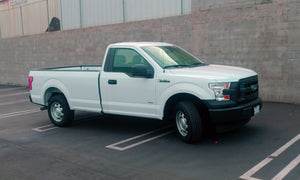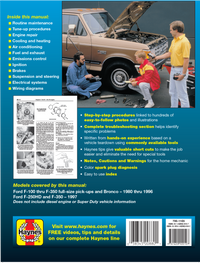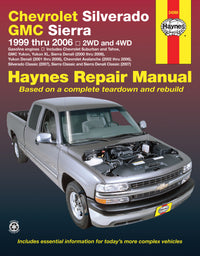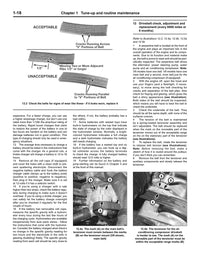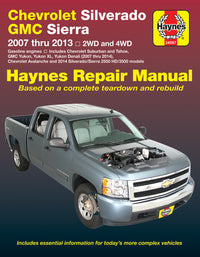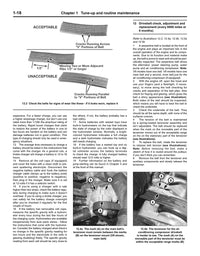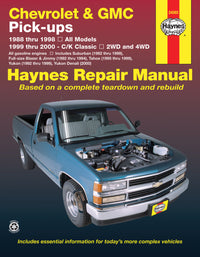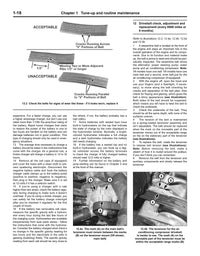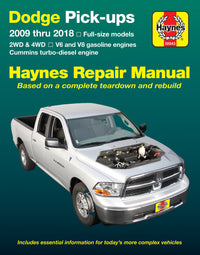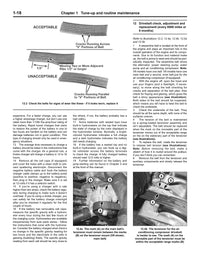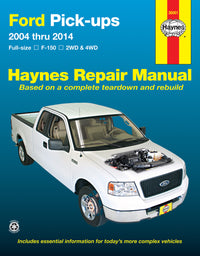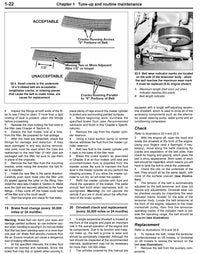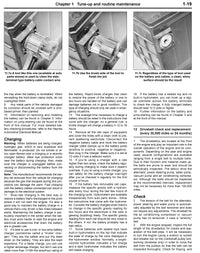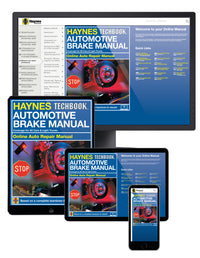All Haynes Digital Online Manuals are currently 50% off. They feature everything you love about our books in an instantly accessible digital online form, that you can use via any device with an internet connection.
-
The spark plugs are located on the left side of the engine (4.9L/300ci inline six) or on both sides of all other V6 and V8 engines.
-
(See illustration) In most cases, the tools necessary for spark plug replacement include a dedicated spark plug socket (spark plug sockets are padded inside to prevent damage to the porcelain insulators on the new plugs), a ratchet handle to turn it, extensions to make it easier to reach the pugs, and a gap gauge to check and adjust the gaps on the new plugs (though most come properly gapped today). A torque wrench should be used to properly tighten the new plugs, without overtightening.
A special plug wire removal tool is available for pulling the wire boots from the spark plugs, but it isn’t absolutely necessary.
Tools required for changing spark plugs
1) Spark plug socket - These sockets will have special padding inside to protect the spark plug’s porcelain insulator.
2) Torque wrench - Although not mandatory, using a torque wrench is the best way to ensure the plugs are tightened properly.
3) Ratchet handle - This is the standard handle to turn the spark plug socket. You should never use a torque wrench for loosening bolts or general ratcheting.
4) Socket extension - Depending on engine, model and accessories, you may need special extensions and universal joints to more easily reach some of the plugs.
5) Spark plug gap gauge - These tools to check and adjust the spark plug gap comes in a variety of styles. Make sure the recommended setting for your engine is included.
Spark plug manufacturers recommend using a wire-type gauge when checking the gap - if the wire does not slide between the electrodes with a slight drag, adjustment is required
To change the gap, bend the side electrode only, as indicated by the arrows and be very careful not to crack or chip the porcelain insulator surrounding the center electrode
When removing the spark plug wires, pull only on the spark plug boot with a twisting/pulling motion. Spark plug wire removal pliers make this easier.
A length of snug-fitting rubber hose over the spark plug will save time by helping you guide the plug into tight places and prevent damaged threads when installing the spark plugs. The hose will allow you to turn the plug, but not cross thread it.
Before pushing the spark plug wire onto the end of the plug, inspect the wire and boot for cracks, heat damage, abrasion, and other issues, as outlined in Section 27 of the Haynes manual.
Attach the plug wire to the new spark plug, again using a twisting motion on the boot until it is seated on the spark plug.
Repeat the procedure for the remaining spark plugs, replacing them one at a time to prevent mixing up the spark plug wires.
This video is a general overview of inspecting, gapping, removing and replacing the spark plugs on the typical vehicle. Much of it applies to the motors installed in Ford trucks, but it is meant merely as a supplement to the above instructions.

